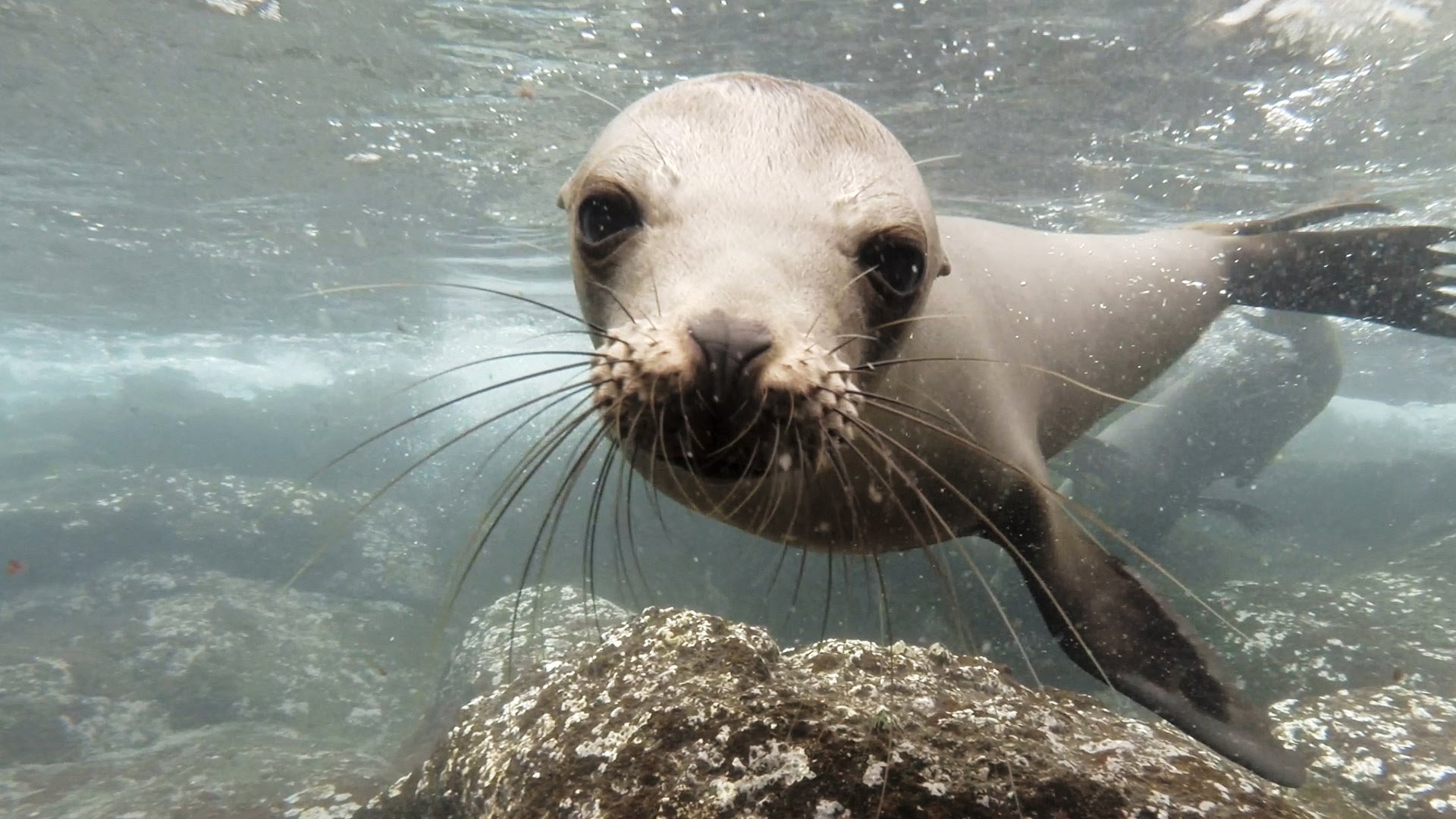
If you’ve ever dreamt of visiting the enchanting Galapagos Islands, then you’ve likely pictured their most charming and ubiquitous residents: the Galapagos Sea Lion (Zalophus wollebaeki). These inquisitive and often fearless pinnipeds are the unofficial greeters of the archipelago, making themselves at home on sandy beaches, rocky shores, and even park benches and fishing boats!
While closely related to the California Sea Lion, the Galapagos Sea Lion is a distinct species, endemic to these unique Pacific islands. Their relaxed demeanor and close proximity to humans make for some of the most unforgettable wildlife encounters on Earth.
A Life of Leisure (and Fierce Competition)
Galapagos Sea Lions are smaller than their California cousins. Males are typically dark brown and can weigh up to 550 pounds, while females are a lighter, more golden brown and usually weigh around 150 pounds. They have a sleek body, long, pointed snout, and those unmistakable external ear flaps that define all sea lions.
Their lives in the Galapagos seem idyllic. You’ll find them:
- Basking in the sun: Often in comical piles on docks, rocks, or sandy beaches.
- Gliding through crystal-clear waters: Effortlessly hunting for sardines, anchovies, and other small fish.
- “Playing” with visitors: Often swimming curiously close to snorkelers and divers, darting around with incredible agility.
- Snoozing anywhere: From the shade of a mangrove tree to a busy pier.
Despite their seemingly lazy lifestyle, life for a male Galapagos Sea Lion, especially during the breeding season, is far from easy. Dominant males (bulls) will fiercely defend their territories on breeding beaches, battling rivals with roaring displays and sometimes bloody clashes. These territories offer access to groups of females, ensuring the continuation of their lineage. Pups, born after an approximately 11-month gestation, are an adorable sight, often seen playfully nipping at their mothers’ tails or learning to swim in shallow tide pools. They remain dependent on their mothers for nursing for up to a year, sometimes even longer.
Why So Chill?
One of the most remarkable aspects of the Galapagos Sea Lion is their lack of fear towards humans. This is largely due to the islands’ unique history:
- No Natural Land Predators: For centuries, these animals evolved in an environment free from terrestrial predators, meaning they never developed an innate fear of large land-based creatures (like us!).
- Protected Status: The Galapagos Islands are a highly protected national park, where strict rules against disturbing wildlife have instilled a sense of safety in the animals.
This unique combination allows for unparalleled interactions, providing incredible opportunities for observation and photography, always with respect and a safe distance, of course.
Where Every Island Is Home
You’ll encounter Galapagos Sea Lions on virtually every island in the archipelago, from the bustling port of San Cristobal to the remote beaches of Española. Some particularly famous spots include:
- San Cristobal Island: Sea lions are everywhere, often sleeping on benches at the waterfront, greeting fishing boats, and lounging on the main town beach.
- Isabela Island: You can often find them in the shallow waters and rocky areas, sometimes even joining snorkelers.
- Fernandina Island: Known for its large and pristine colonies, offering a glimpse into their undisturbed natural behavior.
Facing Modern Challenges in Paradise
While living in a protected paradise, the Galapagos Sea Lion is not without its threats. Their population is currently listed as Endangered by the IUCN. Key challenges include:
- El Niño Events: These powerful climate patterns cause significant changes in ocean currents and temperatures, leading to a dramatic reduction in fish populations. During severe El Niños, sea lion pups and even adults can starve due to lack of food.
- Disease: Outbreaks of diseases, potentially exacerbated by environmental stress, can impact colonies.
- Human Interaction: While generally tolerant, increasing tourism can lead to stress or accidental disturbance if guidelines are not followed. Plastic pollution and accidental entanglement in discarded fishing gear also pose risks.
- Predation: Orcas and large sharks are natural predators, but their impact can be magnified during periods of stress.
Conservation efforts in the Galapagos are rigorous, focusing on marine reserve protection, strict tourism regulations, and ongoing scientific monitoring to understand and mitigate threats.
The Galapagos Sea Lion embodies the magic of the islands – wild, captivating, and remarkably close. They are a constant reminder of the delicate balance of nature and the profound privilege of experiencing wildlife in its purest form. A visit to the Galapagos is incomplete without a memorable encounter with these extraordinary marine ambassadors.
Keep exploring:
- A Deep Dive into the Wonderful World of Sea Lions
- Sea Lions vs Seals: Unraveling the Mystery of Pinnipeds
More photos below ↓











Disclaimer: This blog post is for edutainment purposes only and may not be entirely accurate.






